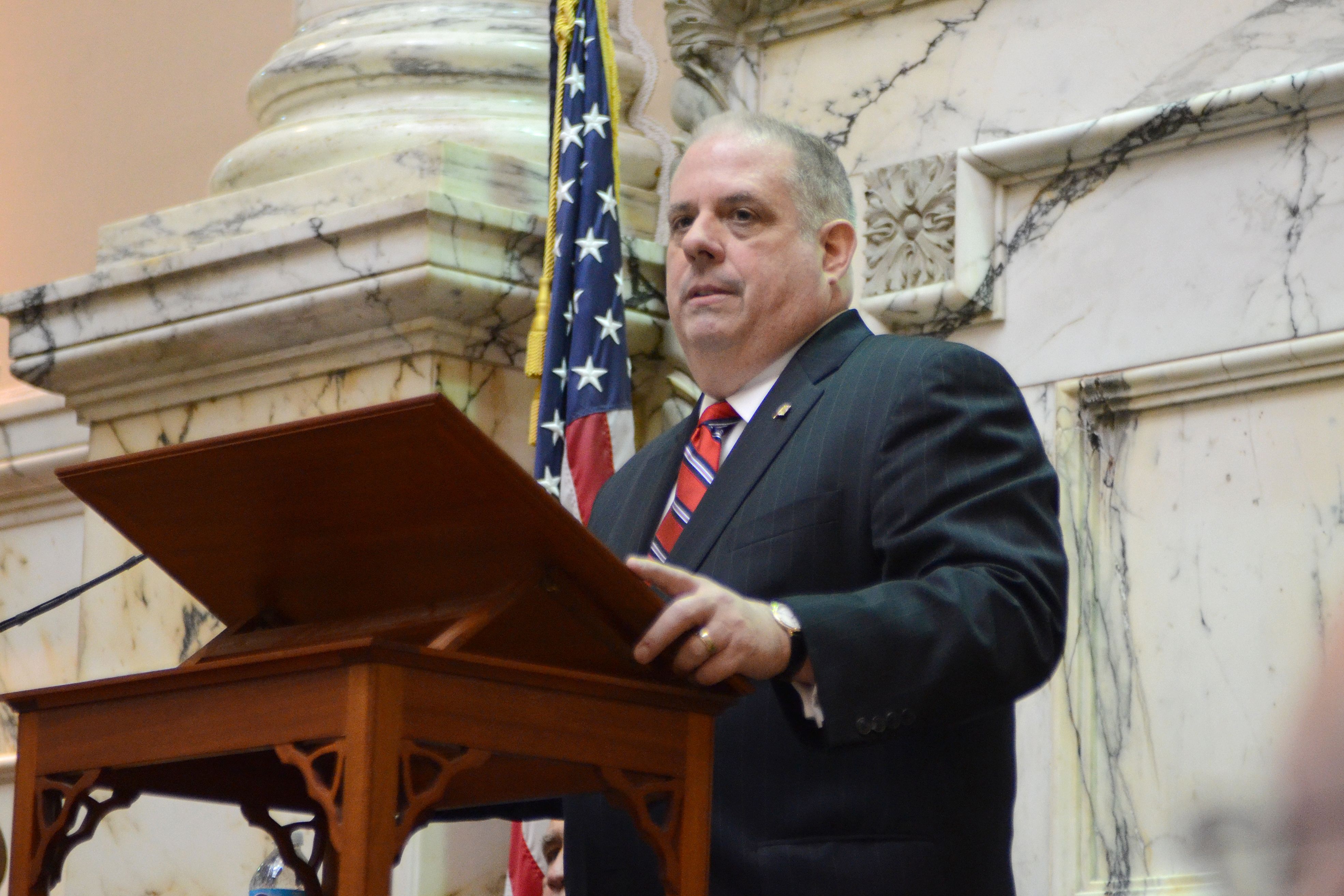Views expressed in opinion columns are the author’s own.
Amid the national anxiety surrounding the midterm elections, I’ve noticed a significant lack of urgency among students on the University of Maryland’s campus regarding the state’s gubernatorial election. On Nov. 6, Marylanders must choose between Democratic nominee Ben Jealous and incumbent Gov. Larry Hogan. For those who care about the future of Baltimore City, it’s critical to prevent Hogan from having another term as governor.
Hogan isn’t that bad, some students say. He’s balanced the budget, reached across the aisle. It’s true that Hogan’s administration has generated a $504 million budget surplus and cut taxes. Conservative supporters of the governor claim he’s putting that money back into the pockets of Marylanders. The question is, which Marylanders?
The benefits of Hogan’s policies have been disproportionately concentrated in wealthier and whiter areas of the state. Some Democratic voters in places like Montgomery County are considering voting for Hogan simply because they “don’t see a reason to vote him out.” That’s because the brunt of Hogan’s policy failures have been concentrated in one area: Baltimore City.
Historically, Baltimore — with more than 600,000 residents, 63 percent of whom are black — has been neglected by Maryland’s policymakers across the aisle. Only 38 percent of eligible city voters cast their ballot in the 2014 gubernatorial election, and only 22 percent of them chose Hogan.
After the 2015 death of Freddie Gray, Hogan had a unique opportunity to prove himself as a true bipartisan who cared about working with Baltimore leaders to improve the city. But with violent crime on the rise in the city — there were a record 56 homicides per 100,000 residents in 2017, the highest rate of any major city in the country — the governor has responded by advocating for harsher mandatory minimum sentencing for violent crimes, an increased police presence in the city and $21 million in cuts from community development and education programs.
While there has been a statewide budget surplus, Hogan has proposed cuts in education spending on programs supporting teachers and low-income students. For years, Baltimore schools have been forced to close at times due to both lack of air conditioning in the summer and lack of heat in the winter. Students and teachers in Baltimore are suffering, yet Hogan couldn’t care less.
Though he claims to be the pro-business governor, Hogan gutted the Red Line, a long-fought for public transit project designed to connect low-income Baltimore residents to more developed parts of the city by facilitating east-west travel. Cutting off residents from economic opportunities, making it harder for them to transport themselves to work, and denying future opportunities for transit-oriented business and residential development does not sound very pro-business to me.
Hogan has prioritized spending his money on widening highways. This will only put more cars on the road, congest traffic, and worsen the negative impacts of climate change, which will hit Baltimore harder than other areas of the state, due to the city’s aging infrastructure and proximity to the water.
If funding for public schools, fair wages for teachers, equitable public transit, environmental sustainability, and economic prosperity for Baltimore residents are part of your vision for Maryland, it’s time for new leadership to put those goals into action. If you care about the future of Baltimore City, think critically before casting your vote on Nov. 6.
Olivia Delaplaine is a junior government and politics major. She can be reached at odelaplaine15@gmail.com.



